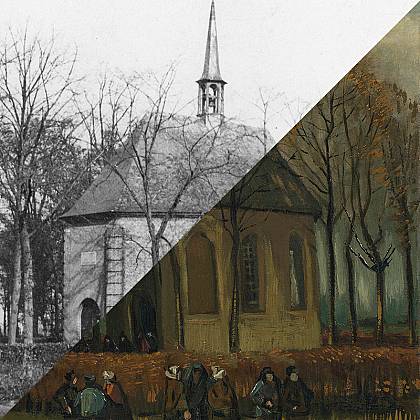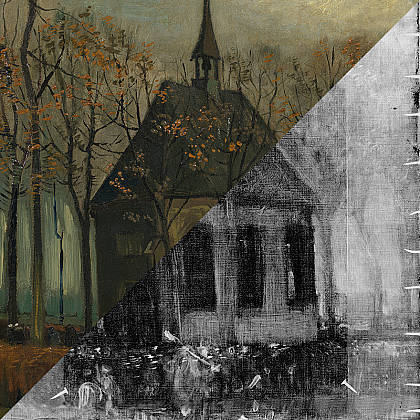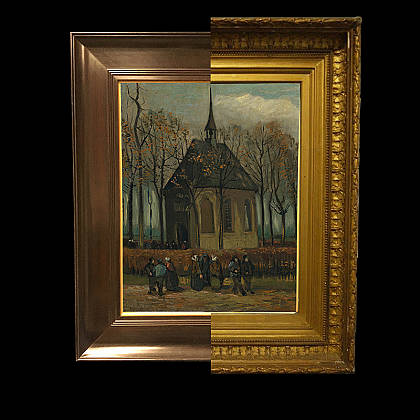Time for a clean
Congregation Leaving the Reformed Church in Nuenen
This work was recovered in 2016. It had been stolen from the museum 14 years earlier. When it came home, the conservator was relieved to discover that it had suffered little damage. She did however decide it needed a clean. She removed the old, yellowed layer of varnish.
Research
Before the painting was treated experts first examined it thoroughly. A tiny sample of paint and a special scan of the surface revealed a lot of information about the structure of the paint and varnish layers. It was also possible to analyse what materials they are made of. With this knowledge, the conservator knew which solvent she could safely use to remove the discoloured layer of varnish.
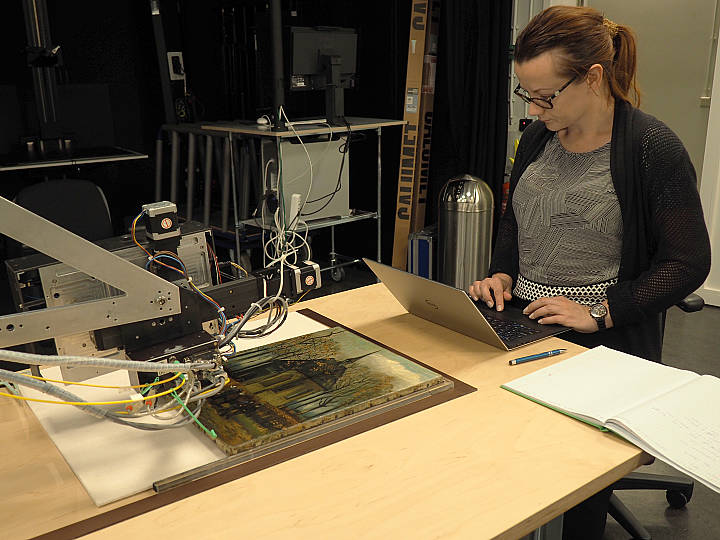
Special scanning equipment was used to examine the build-up of (semi-)transparant paint and varnish layers.
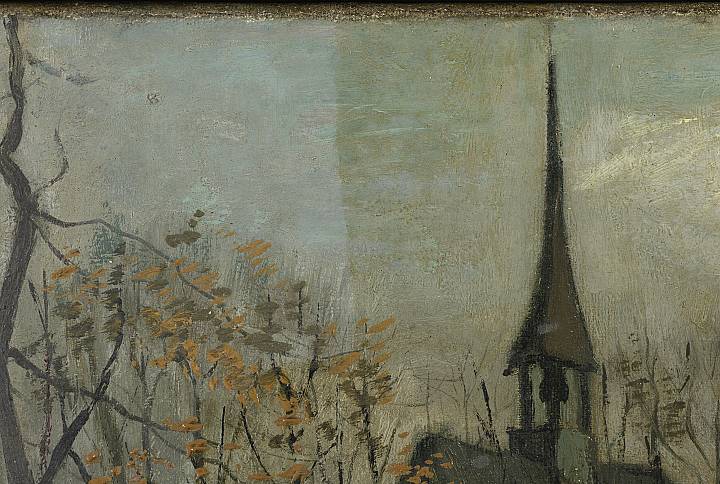
Photo taken during varnish removal. On the right the discoloured varnish still appears as a yellow veil over the colours. On the left the varnish is already removed and the colours look cooler.

The conservator carefully removes the discoloured varnish from the painting.
Protective layer
A layer of varnish is applied to protect the paint from dust and dirt. Varnish also gives the colours depth and contrast. Van Gogh preferred to leave his paintings unvarnished, but the owners of this painting decided to varnish it for practical or aesthetic reasons.
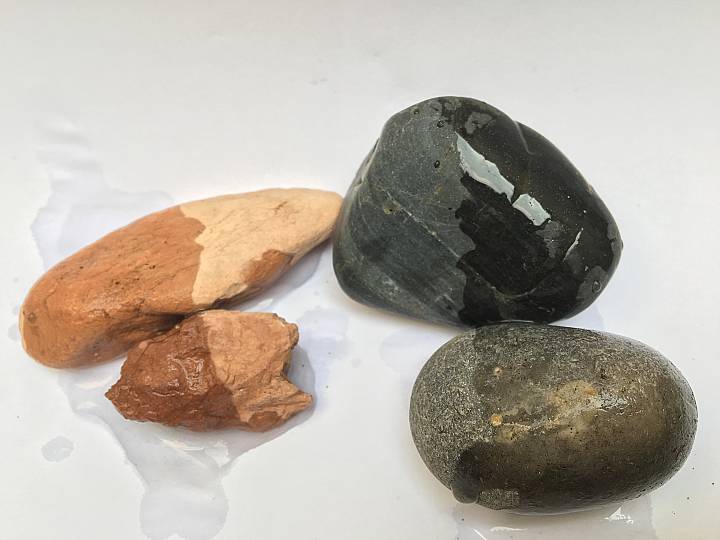
The effect of varnish on the paint is similar to that of water on a dry stone: it makes the colours look more saturated, and the contrasts are greater. This is because the light refracts differently on the layer that lies like a thin film over the surface.
Egg white
Under the stereomicroscope the conservator discovered that Van Gogh also applied a kind of varnish.
It is in fact a thin layer of egg white. Van Gogh probably applied it for temporary protection. It also allowed him to assess the effect of the colours more easily.
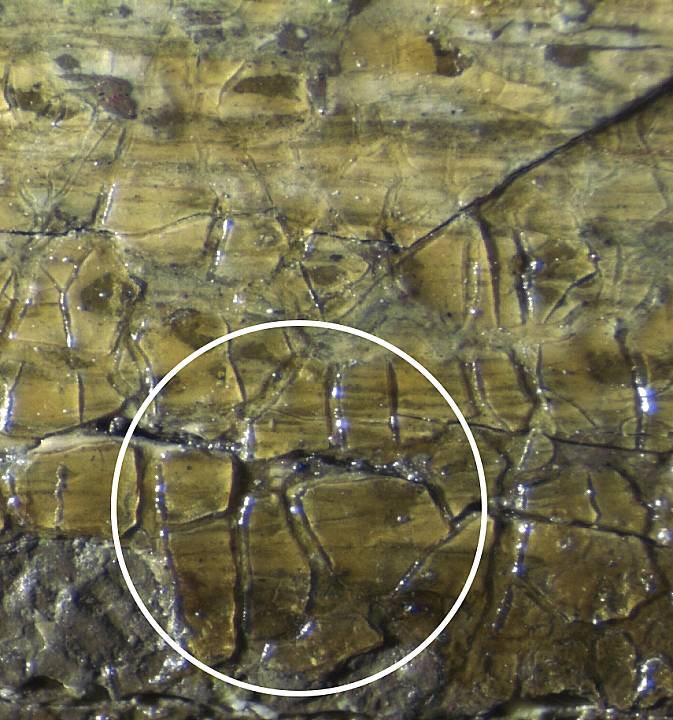
Under the microscope the remains of the egg white varnish appear as ‘islands’ on the paint.
This egg white varnish was never removed. As it hardened, it shrank and cracked. Since the paint underneath was not yet completely dry, it also made hairline cracks in the paint.
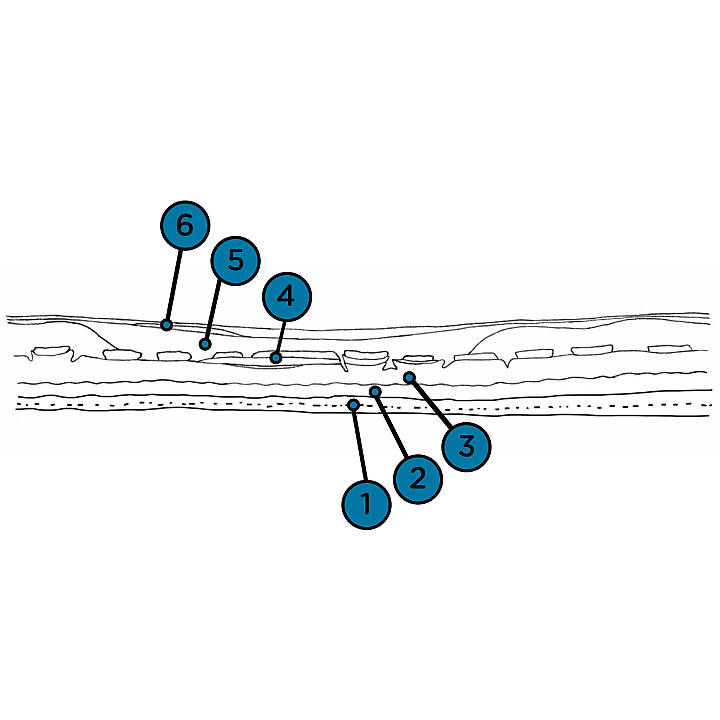
This is a model of a cross-section of the paint. It shows how the paint and varnish layers are structured:
1. canvas
2. ground
3. paint layers, of the first painting session
4. egg white
5. paint layers of second painting session
6. two layers of (synthetic) varnish
